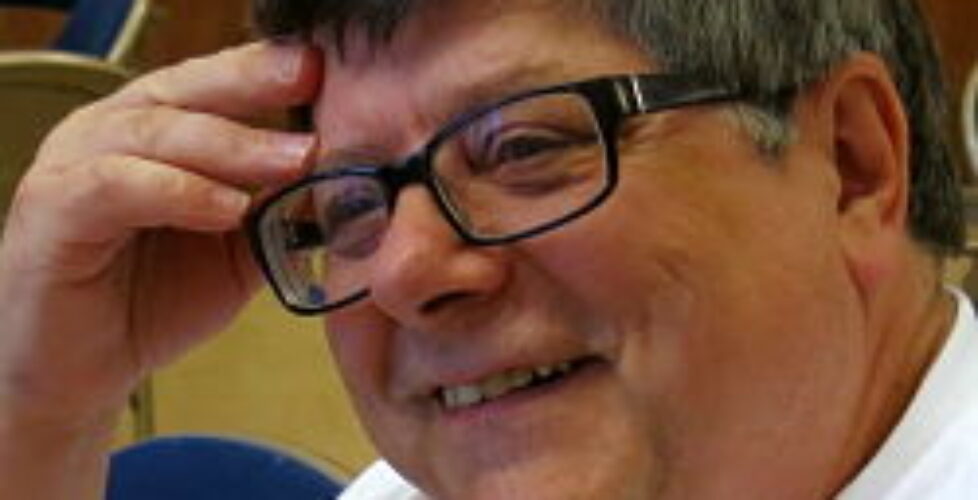Bruce Colegrove: The Girls in the Auschwitz Band
Temple member Bruce Colegrove describes the girls’ band at Auschwitz-Birkenau as the “most eclectic, the most unique, the most controversial, and, without any question, the most zealously documented gathering of female musical talent the world has ever known.”
Their story, he says, also is one of the most inspiring. Bruce recently developed a new website dedicated to sharing his extensive research on the Women’s Orchestra of Auschwitz, which was founded in the concentration camp in April 1943.
He calls them “the Girls in the Auschwitz Band” on his website (thegirlsintheauschwitz.band), influenced by the title of a memoir translated from Polish to “One of the Girls in the Band.” Bruce also notes that the majority of band members were extremely young and the ensemble bore little resemblance to what we would consider an orchestra.
“We have a sacred duty to remember the Holocaust,” said Bruce, who teaches Hebrew to students in the Temple’s Religious School and has been a b’nei mitzvah tutor for nearly 18 years.
“This story needs to be remembered. There are so many inspiring stories of survival. This also is a way to remember who they were and where they were from. The more I find out, the more I feel this is a memorial to them, their parents, siblings and spouses who did not survive.”
He traces the stories of the women from 30 cities in 12 countries who faced barbaric conditions and death at Auschwitz. The musicians were aged 14 to 58. At first, the SS refused to consider including Jews in the band, but later relented to utilize their musical talents.
The band’s primary job was to play when prisoners were marched to and from their daily work details at the camp gate. They gave concerts for prisoners and the SS. They played for prisoners in the infirmary and sometimes when transports arrived or during selections.
Bruce, 64, said he’s been interested in Holocaust literature for many years. A colleague at Canterbury High School, where he teaches Spanish, suggested he read Primo Levi’s The Drowned and the Saved, which talks about a moral “gray zone” between good and evil.
From there, he taught a course called Films of the Holocaust that included “Playing for Time.” The 1980 made-for-tv movie stars Vanessa Redgrave as Fania Fenelon, a classical pianist and singer in Paris, who is arrested during the Nazi occupation for her support of the French underground.
She is sent to Auschwitz, where she becomes part of the camp’s all-female orchestra led by conductor Alma Rose. Rose, a well-known violinist, came from a distinguished family. Her father, Arnold, was the concertmaster for the Vienna Philharmonic Orchestra and her uncle was composer Gustav Mahler.

 Bruce became fascinated with the story and the controversy provoked by the film. He still teaches the films course each spring at Canterbury, but he no longer shows “Playing for Time” because he says it misrepresents the story.
Bruce became fascinated with the story and the controversy provoked by the film. He still teaches the films course each spring at Canterbury, but he no longer shows “Playing for Time” because he says it misrepresents the story.
His language skills extend beyond Spanish. Bruce learned German while serving overseas in the U.S. Army, adding Ancient Greek upon his return. He has studied a half-dozen other languages as well. As part of his research for the website, he translated information from Ladino, German, Spanish, French and Hebrew. He said he wishes he knew Russian and Polish to help with his project.
His motivation for the website includes the desire to write a screenplay someday to correct the inaccuracies of the film. It’s also a fascinating story, Bruce said, including the murky circumstances around the death of Alma Rose. He has a theory about what happened to her that he continues to research.
“The story of the girls’ band is compelling because something like this could happen again,” he said. “We need to be aware. We can’t let this go unremembered.”

